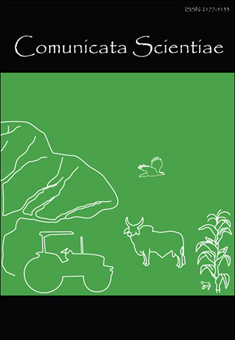Aged garlic extract enhances paraoxonase 1 activity and suppress oxidative stress in CCl4 - intoxicated rats
DOI:
https://doi.org/10.14295/cs.v3i1.95Keywords:
Garlic, hepatotoxicity, CCl4, heart function, antioxidantAbstract
The current study was undertaken to evaluate the hepatoprotective potential of aged garlicextract (AGE) against hepatotoxicity induced by CCl4 in adult male rats. CCl4 intoxication (1ml/kg b.w., twice a week, i.p. for 4 weeks) significantly increased oxidative stress as indicated byincreased hepatic MDA formation, decreased both serum total and reduced glutathione contents,and inhibition of hepatic glutathione reductase and serum paraoxonase 1(POX1) activities. Inaddition, treatment with CCl4 produced a significant increase in the activities of serum ALT, ASTand albumin level with a significant decrease in total protein level. Moreover, treatment with CCl4resulted in significant increase in the levels of total cholesterol, LDL-cholesterol, triglycerides as wellas creatine kinase isoenzyme and lactate dehydrogenase activities, and a significant decrease inHDL-cholesterol compared to control group. Oral treatment with AGE at doses of 100 and 200 mg/kg/day in combination with CCl4 significantly ameliorated the severity of CCl4- induced changes inthe above mentioned parameters in a dose- dependent manner. In conclusion, the present studyindicated that AGE improves POX1 activity and attenuates liver and cardiac dysfunction inducedby CCl4. The protective effects of AGE against CCl4 toxicity may be attributed to its antioxidant andfree radical scavenging activities due to its higher contents of organosulphur compounds.Downloads
Download data is not yet available.
Downloads
Additional Files
Published
2012-03-30
How to Cite
Abdel-Wahhab, K. G. E.-D., Khadrawy, Y. A., & Mannaa, F. A. E. (2012). Aged garlic extract enhances paraoxonase 1 activity and suppress oxidative stress in CCl4 - intoxicated rats. Comunicata Scientiae, 3(1), 55–63. https://doi.org/10.14295/cs.v3i1.95
Issue
Section
Original Article
License
All articles published may be reproduced or utilized in any form or by any means whether specified Comunicata Scientiae, author(s), volume, pages and year. The authors are responsible for all the statements and concepts contained in the article.




